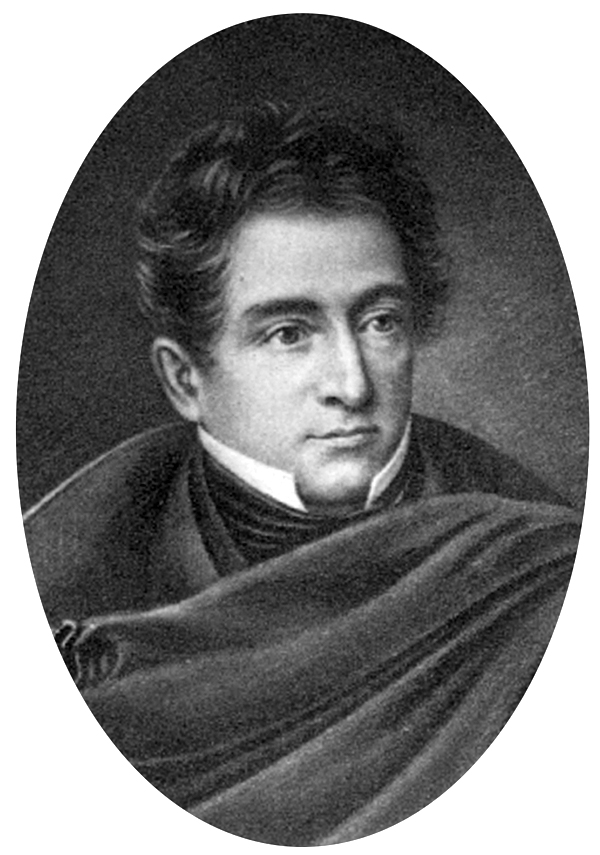Pierre Auguste Charles Bourguignon Derbigny
French-born Pierre Derbigny became the sixth elected governor of Louisiana in 1828 and played a role in the Louisiana Purchase.

Courtesy of Center for Louisiana Studies at The University of Louisiana at Lafayette
Governor Pierre Derbigny. Fortier, Alcee (Artist)
After one unsuccessful bid for the office, French-born Pierre Derbigny became the sixth elected governor of Louisiana in 1828. He was affiliated with the newly-formed National Republic Party, which was anti-Jackson in its platform. Before becoming governor, he played a central role in the integration of Louisiana into the United States after the Louisiana Purchase. An advocate of self-rule in the Louisiana territory, he helped shape the laws that were adopted for use in the young state. Though he died after only ten months in office, Derbigny’s influence on the state was unmistakable.
Pierre Augustin Bourguignon Derbigny was born in Laon, France, on June 30, 1769. He was the son of Augustin Bourguignon d’Herbigny, the president of the Directoire de l’Ainse and mayor of Laon, and Louise Angélique Blondela. He studied law at St. Geneviève but the French Revolution interrupted his studies. In 1791 Derbigny left France to travel to St. Domingue, Pittsburgh, the Illinois country, New Madrid, Florida, and Havana, before arriving in New Orleans, then a colony of Spain, in 1797.
By 1803, Derbigny had become secretary of the Municipal Council of New Orleans and an interpreter for the Territory of Orleans. A year later, he became secretary of the Legislative Council and went to Washington, DC, to advocate self-rule for residents of the Orleans territory after the Louisiana Purchase. His efforts were rewarded when, in 1805, the U.S. Congress established a territorial legislature for Louisiana with an elected lower house. He also protested the Act of Congress of 1804, which closed the slave trade.
From 1806 to 1807, Derbigny represented the city of New Orleans in a lawsuit brought by Edward Livingston for possession of the waterfront area known as the batture, an elevated river or sea bed. Later, he wrote pamphlets supporting the claim of the U.S. government to ownership of the batture.
Derbigny continued to be a prominent spokesman for the Louisiana territory as it was integrated into the United States. He opposed the establishment of British common law in Louisiana, favoring the retention of the civil laws established in Louisiana during the French and Spanish colonial periods. He also helped lead the movement to establish the College of Orleans in 1811, the first institution of higher learning in Louisiana, and became a regent of that institution. In 1812, he was selected as secretary of the Territorial Senate.
From 1813 to 1820, Derbigny served as a justice of the Louisiana Supreme Court. He, along with Edward Livingston and Louis Moreau de Liset, began drafting what would become the 1825 Civil Code of Louisiana. He resigned from the court to launch a gubernatorial campaign against J. N. Destréhan, Abner L. Duncan, and Thomas B. Robertson. Despite his loss to Robertson, Derbigny was appointed Secretary of State of Louisiana and served from 1821 to 1828.
Derbigny’s bid for governor proved more successful in 1828 and he defeated Thomas Butler, Bernard Marigny, and Philemon Thomas. As governor, Derbigny recommended regulation of steamboats to prevent accidents and supported various public works including the regular inspection and repair of the levees and levee roads. He also supported legislation that established the New Orleans Gas Light Company, and consolidated several companies to improve navigation of the bayous. In addition, he urged the appointment of an unpaid inspector of public schools to report annually on each school supported by public funds.
Derbigny unexpectedly died in Gretna on October 6, 1829, from injuries sustained when thrown from his carriage. He was interred St. Louis Cemetery in New Orleans.
This entry was adapted from the Dictionary of Louisiana Biography, a publication of the Louisiana Historical Association in cooperation with the Center for Louisiana Studies at the University of Louisiana, Lafayette.
Sources: Michel d’Herbigny, Pierre Bourguignon-d’Herbigny (1769-1829) Governor of Louisiana and His Descendants in U.S.A. (1979); Joseph Tregle, “The Governors of Louisiana: Pierre Auguste Charles Bourguignon Derbigny, 1828-1829,” Louisiana History, XXII (1981); William Bass Hatcher, The Political Career of Edward Livingston (Ph. D. dissertation, Louisiana State University, 1937); Sidney Romero, ed., “My Fellow Citizens”: The Inaugural Addresses of Louisiana’s Governors (1980); Marion John Bennett Pierson, comp., Louisiana Soldiers in the War of 1812 (1963).
